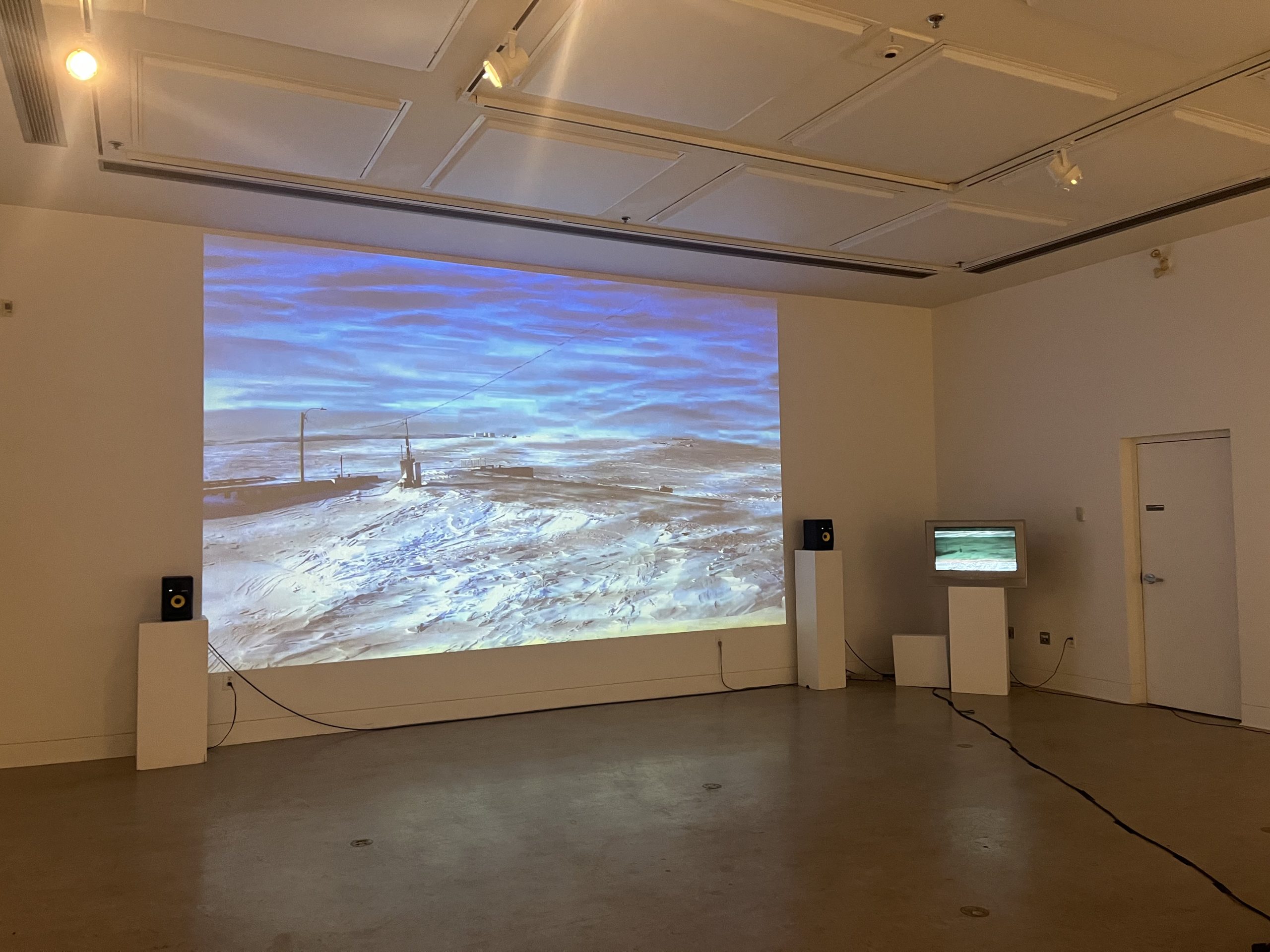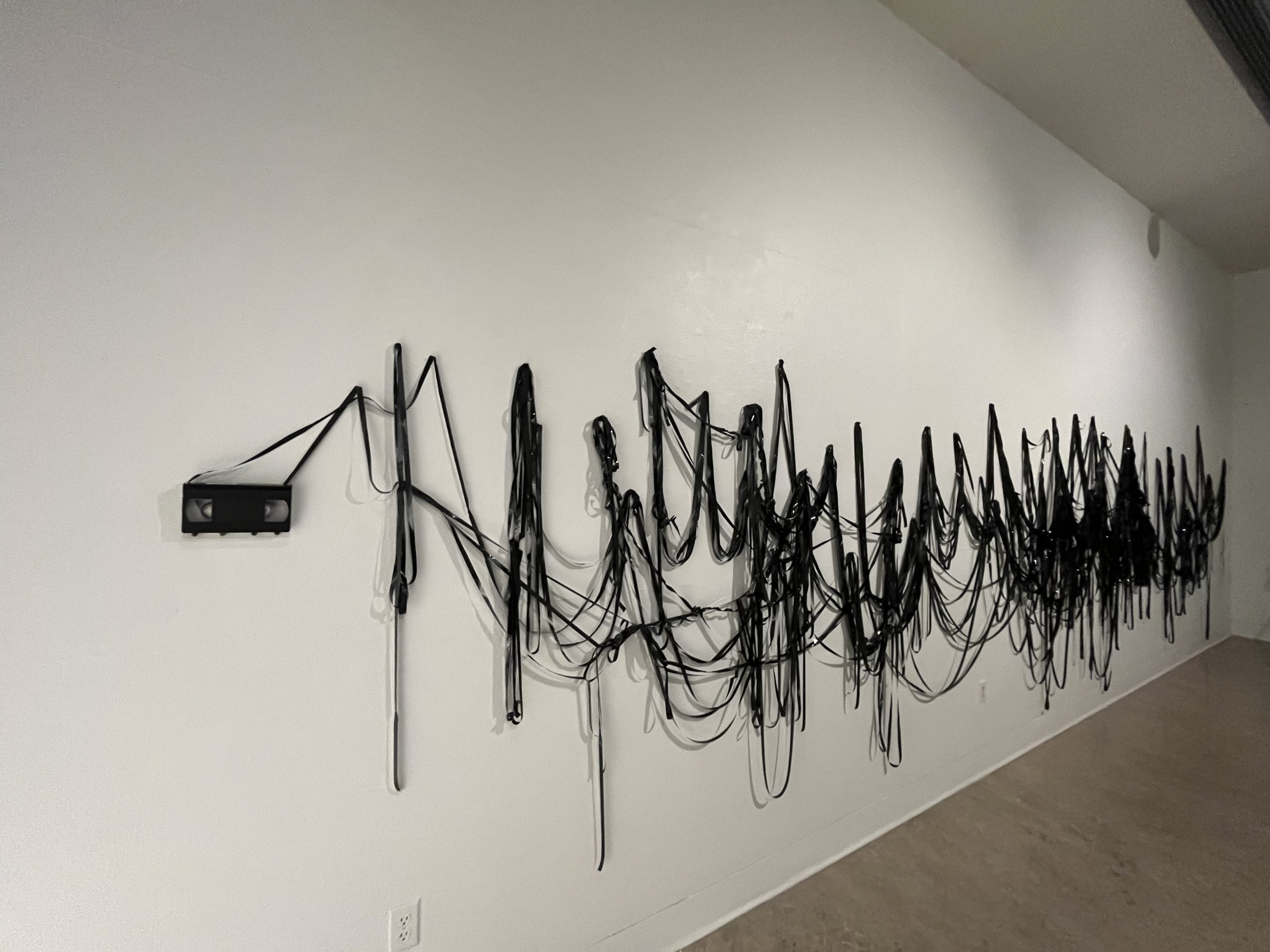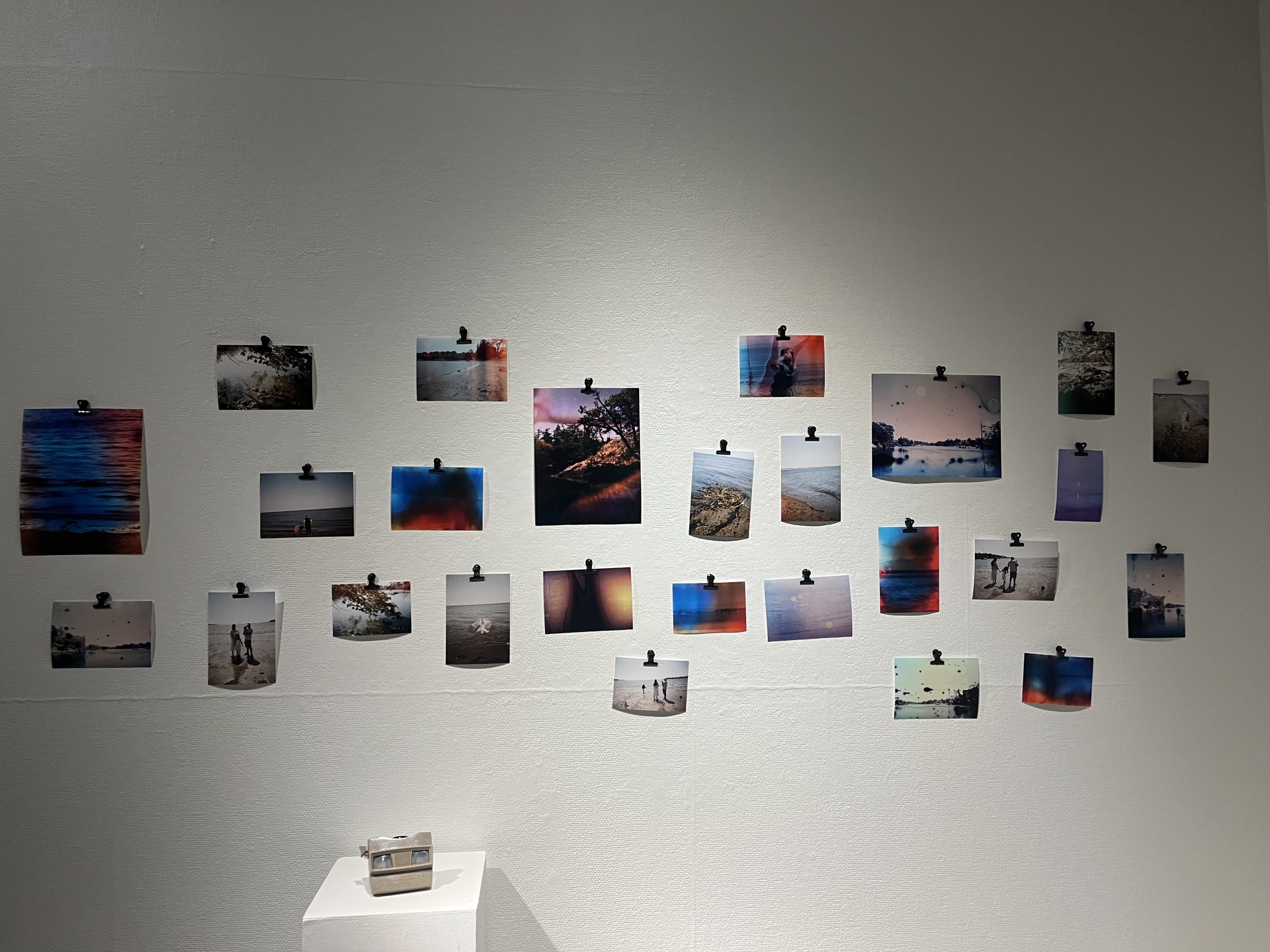UVic master’s student completes term as Ocean Networks Canada’s fifth artist-in-residence

Photo by Kiera Clark.
Since 2019, UVic’s ocean observation facility, Ocean Networks Canada (ONC) — established in 2007— has partnered with UVic’s Faculty of Fine Arts to organize an Artist-in-Residence program. Megan Harton, a student in the master of music in music technology program at UVic, recently completed their four month term as ONC’s fifth artist-in-residence. Their term culminated in a week-long immersive art installation in UVic’s Visual Arts building.
Harton’s installation, solastalgia [soon to be what once was], explores themes of nostalgia and grief in relation to oceanic ecosystems. Solastalgia, a concept created by environmental philosopher Glenn Albrecht, is the “distress that is produced by environmental change.”
In the installation, Harton utilized ONC’s extensive resources for the installation, including audio recordings from hydrophones, underwater microphones, and video footage from underwater cameras. The footage, made into a 47-minute loop, was then both projected onto the wall and played on an old tube TV.
Harton uses what they’ve termed “nostalgic retro iconography,” such as VHS tapes, a boom box, and a polaroid camera. “[They are] icons and physical symbols that tap you into a different time, a different decade, because they’re now obsolete media,” they explained.

Photo by Kiera Clark.
There are even two View-Masters, which present three dimensional images of Harton’s photography that viewers can interact with — one from 1998 and the other from the early-to-mid ‘70s. Harton has also used VHS tapes to create wave patterns on one of the walls, which was intended to “make a physical connection to waves but also to the obsolete medium of VHS tape,” they said.
“The video is fragments of a lot of footage and they’re also overlaid on top of each other, sometimes up to four layers all overlapping,” Harton told the Martlet. “It takes footage from some of the underwater cameras in those observatories, some of the shore stations that Ocean Networks has, some of my own footage that was captured on MiniDV tape and digital camcorders … and also using digital effects to make them overlap and superimpose each other.”
The soundscape alternates between interviews with members of ONC’s Indigenous Engagement Team and experimental sound created by Harton, using a series of audio recordings from ONC, which they programmed to sound deliberately fragmented. The final element of the installation is the photography, which is displayed on the wall alongside the View-Masters.
The soundscape alternates between interviews and experimental sound created by Harton, using a series of audio recordings from ONC, which they programmed to sound deliberately fragmented.

Photo by Kiera Clark.
“[For] the photography, I wanted to do a commentary on something I learned through being at Ocean Networks, [which is that] the ocean’s getting more and more acidic,” Harton said. “There’s an experimental photography technique called film souping… after shooting a roll of film photography, you can soak it in an acidic liquid for certain periods of time… and it’ll make all these crazy effects on the image once it’s been developed.”
Harton used a variety of liquids for this technique, and even had one of ONC’s scientists collect a deep ocean sample for them to soak the film in, which was so acidic it corroded the film canister.
“[The installation] taps into nostalgia, memory, [and] changing climates in many ways,” Harton explained. “It’s tapping into ocean acidification, then there’s the commentary on the noise pollution of the oceans with the different vessel noises coming out, and the whole thing is revolving around changing climates.”
Harton hopes that the installation will encourage viewers to tune into their emotions while engaging in self-reflection. “I want to physically convey that feeling [of solastalgia], so I’m hoping that people tap into that by recognizing the View-Masters, or the boombox, or the VHS tape, or physically seeing all the fragmented images and sounds. So, tapping into that, or leaving it wanting to be more aware and conserve the ecosystems around them,” they said.








